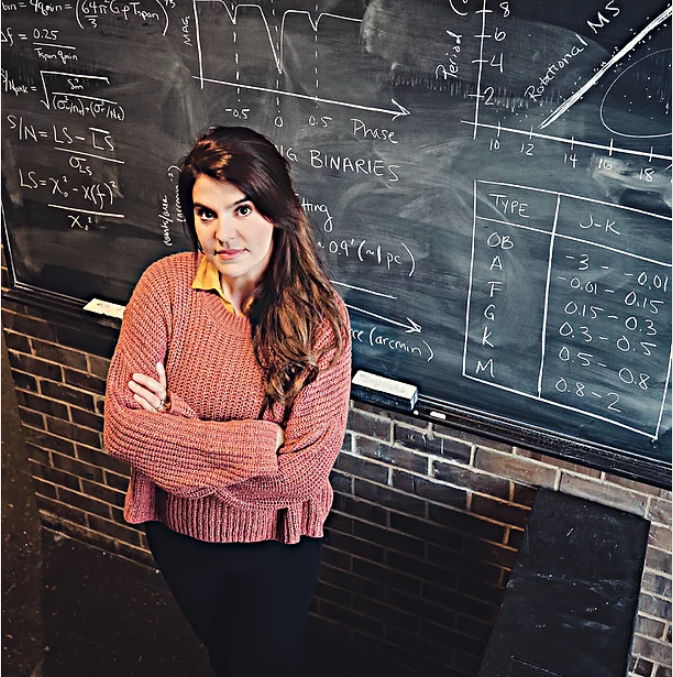Get to Know a Scientist: Astrophysicist Dr. Melinda Soares-Furtado
An astrophysicist studies stars, planets, and other things in space. Introducing Dr. Melinda Soares-Furtado, who tells us about herself and her career.
Meet Melinda Soares-Furtado, a NASA Hubble Postdoctoral Fellow at the University of Wisconsin-Madison. She has a BS in Physics from the University of California, Santa Cruz and PhD in Astrophysical Science from Princeton University. She works on detecting and characterizing stars in open clusters that have anomalous characteristics brought about by the ingestion of close-orbiting substellar companions. For everyone who isn’t an astrophysicist, let’s unpack that with some questions for Melinda.


Science Connected: How would you explain your research to a high school student?
Dr. Soares-Furtado: Stars are not isolated in space. They come in binaries and multiple star systems and, oftentimes, are accompanied by planets. I’m interested in the ways in which stellar companions impact the observable features of stars. I investigate how these companions can alter the rotational and chemical signatures of stars.
SC: How would you explain your research to an elementary school student?
Soares-Furtado: In our own solar system, the sun will eventually run out of fuel and expand 100x larger. Don’t worry, this will not happen for another few billion years. When the sun does eventually grow in size, it will engulf our inner rocky bodies including Mercury and Venus (maybe even the Earth!). Some stars have already done this. We may be able to find proof of this phenomenon even if it happened very long ago. I search for ways to determine if such an event has happened. I also investigate what we can learn from these cannibal stars today.
SC: Why do you think your research is important?
Soares-Furtado: If we are able to find a star that has unambiguously engulfed a companion, we can study the spectroscopic features of that star to determine the bulk composition of planets. This is particularly true among stars in clusters, as we have a comparison sample to draw from. From the destruction of a planetary body, we can learn about the formation and evolution of planets.
SC: Why are you studying what you are studying? What do you love most about it?
Soares-Furtado: I find stars and planets fascinating. While the interplay between stars and planets is still not well understood, the scientific community has produced increasingly larger datasets at ever-improving levels of resolution. Not only is the time ripe for major discoveries, but working on them is incredibly fun. Also, I really want to know if the lithium-rich, rapidly-rotating stars in clusters are formed from planetary ingestion events.
SC: What would you tell a young person interested in pursuing a career as an astrophysicist?
Soares-Furtado: Firstly, I highly recommend it. I can honestly say that I love what I do. It’s a career where you are always growing and evolving. You’re surrounded by brilliant, creative thinkers who inspire you to do great work. Also, as an astronomer, you cannot help but feel a sense of awe for nature. I am increasingly humbled by the vastness and complexity of the natural world.
Secondly, surround yourself with people who will champion your efforts. The road to a scientific career is long and challenging, so it is important to have mentors who will support you throughout this journey. Protect yourself from people who make you feel small or incapable.
SC: What hobbies, activities, or pastimes do you enjoy in your free time?
Soares-Furtado: I collect (and read) rare astronomy textbooks. They are my most prized possessions. When we are not in a pandemic, I love visiting used bookstores to search for special gems. I enjoy photography and actually worked with my sister as a family photographer for a few years. I’m also a big fan of Latin dance (salsa, cumbia, and bachata). Before coming to graduate school, I was on a salsa dance team in San Jose, California.
SC: What might people be most surprised to learn about you?
Soares-Furtado: I don’t know if it is most surprising, but I had a very non-traditional road to academia. I went back to college later in life when I was already a mother. I benefited greatly from the high-quality instruction and student support services offered at my hometown community college (Gavilan College). I think that community colleges are national treasures.
Projects for Amateur Astronomers
Do you want to help astronomers collect research data? You can get involved in these citizen science projects.
CITIZEN SCIENTISTS HAVE FOUND DOZENS OF BROWN DWARFS NEAR EARTH
HELP NASA FIND OUT HOW PLANETS FORM
FEMALE SPACE SCIENCE HEROES, INTERACTIVE APP
Featured photo: The Milky Way Galaxy photographed in 2020 by O. Heda.
This interview with astrophysicist Dr. Melinda Soares-Furtado is part of the Get to Know a Scientist series from Science Connected.




